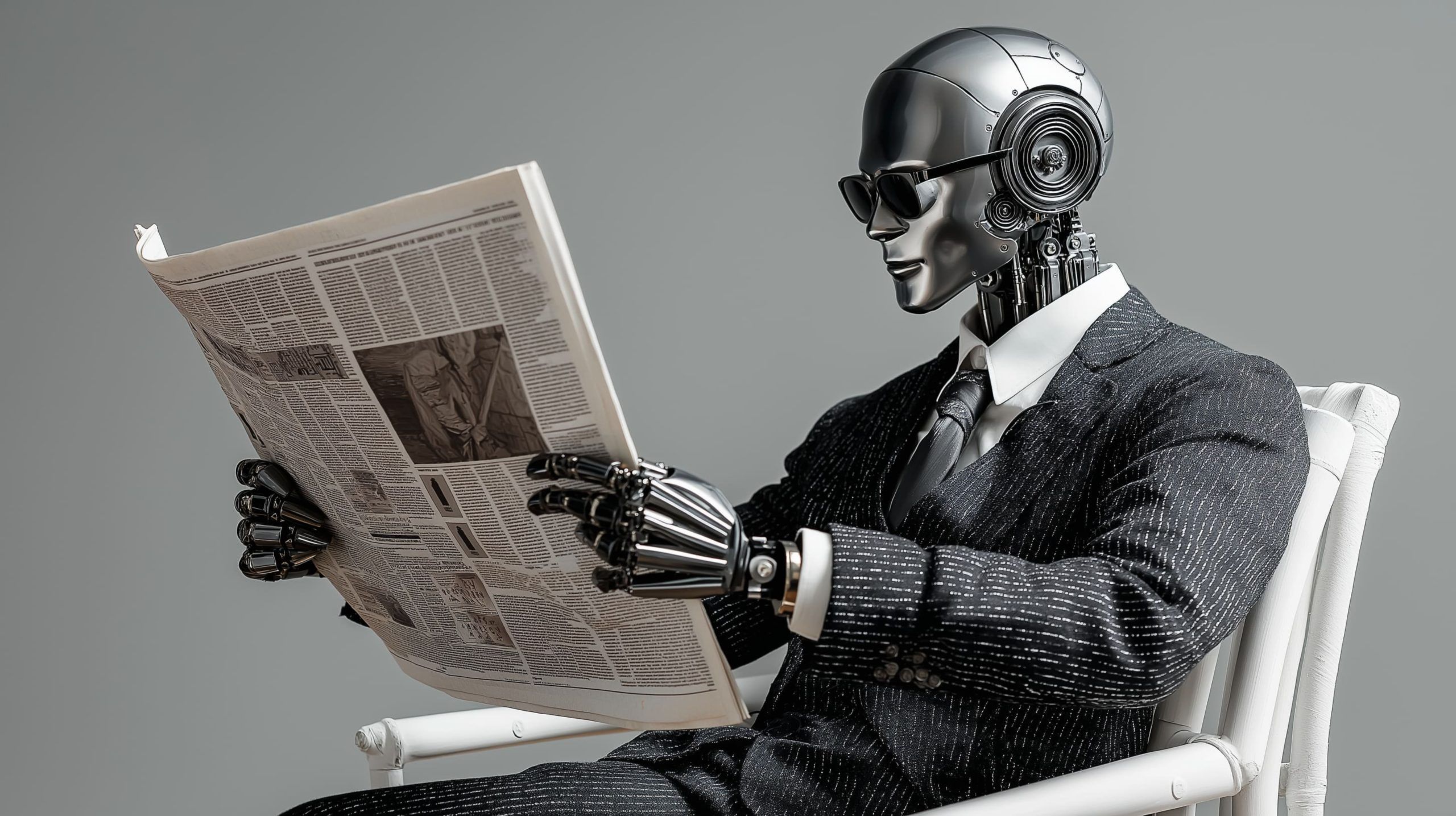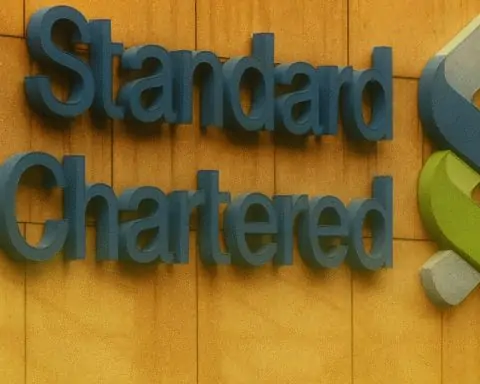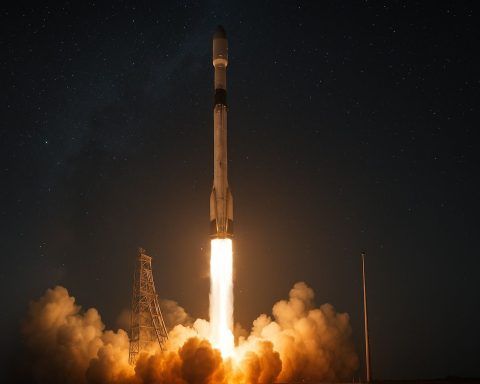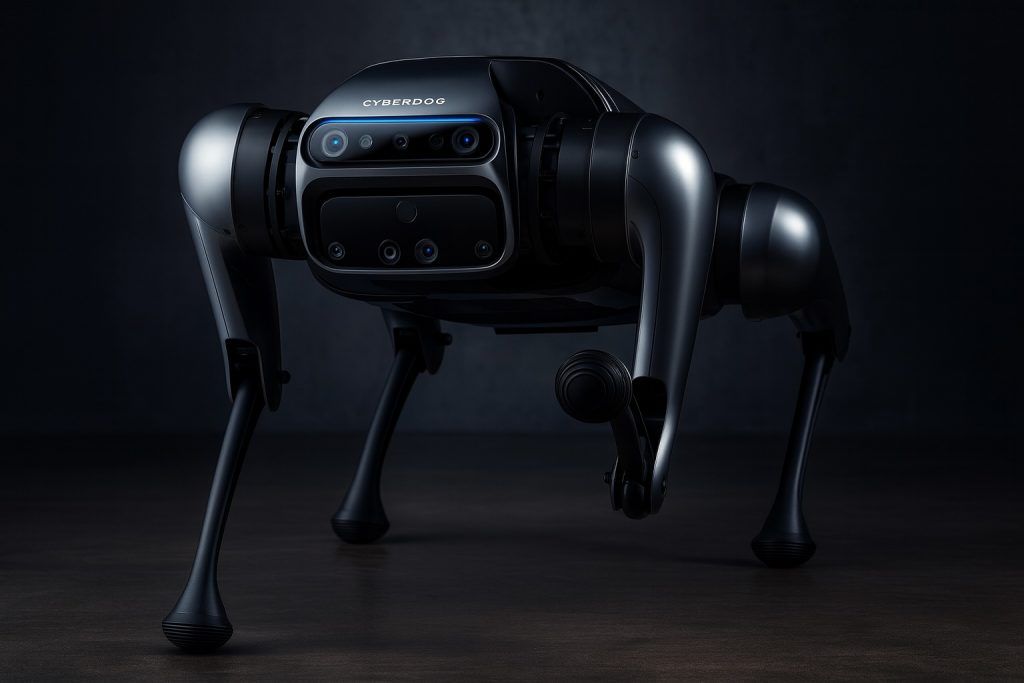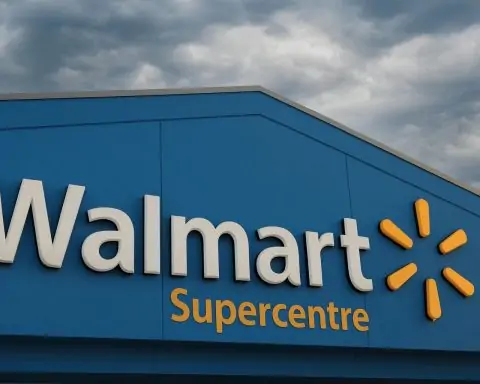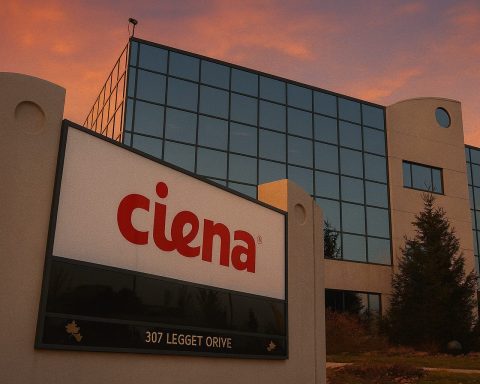Key Facts
- Meta debuts smart glasses: Meta launched its first consumer smart glasses with a built-in display (Meta “Ray-Ban Display”) for $799, alongside a $499 Oakley sports model [1] [2]. CEO Mark Zuckerberg touted smart glasses as a step toward personal “superintelligence” in everyday life [3].
- Apple’s big software refresh: Apple released iOS 26 (skipping “iOS 19–25” to align with year-based naming) with a radical “Liquid Glass” design overhaul across iPhone, iPad, Watch, and Mac [4]. The update adds translucent bubbly visuals, smarter spam call screening, and a new gaming hub, among other features [5] [6].
- Space launch milestones:SpaceX notched its 117th Falcon 9 launch of 2025, sending 28 Starlink satellites to orbit and landing the booster at sea [7] [8]. Rival Blue Origin successfully flew its New Shepard rocket again after delays, carrying student experiments on a 10-minute suborbital trip [9] [10]. Meanwhile, a new Northrop Grumman Cygnus XL cargo craft docked at the ISS with 11,000 lbs of supplies after a software hiccup was resolved [11] [12].
- Cybersecurity crisis: A cyberattack on Jaguar Land Rover (JLR) forced extended shutdowns of the automaker’s global production and IT systems [13] [14]. A hacker group tied to “Scattered Spider” claimed responsibility, and insiders warn the disruption could last for weeks, costing JLR millions in lost output [15] [16].
- Telecom innovation:Nokia opened a 5G and edge computing hub in Switzerland in partnership with Intel and others, to let startups test private 5G networks and AI-powered industrial applications [17] [18]. The facility provides full-scale private 5G and edge infrastructure for projects in smart manufacturing, healthcare, energy and more [19] [20].
- Chip industry shakeup:Nvidia announced a $5 billion investment in Intel, taking ~4% stake in the struggling rival and agreeing to co-develop cutting-edge PC and data-center chips [21] [22]. Intel’s stock jumped 23% on the lifeline [23], which analysts call a potential game-changer that could bolster Intel against competitors like AMD and TSMC [24] [25].
- Auto tech roadmap:Hyundai unveiled an ambitious 2030 strategy aiming for 5.55 million vehicle sales (including 3.3 million electrified cars) by 2030 [26]. The plan includes launching new EV models (from a midsize electric pickup to region-specific EVs for Europe, India and China) and rolling out long-range extended-range EVs in 2027 with 600+ mile range [27] [28]. Hyundai is investing heavily in next-gen battery tech and software-defined vehicles to enable over-the-air upgrades and AI-driven features in future cars [29].
- Autonomous transit rollout: Alphabet’s Waymo partnered with transit-tech firm Via to integrate driverless taxis into public transit networks [30]. Chandler, AZ will be the first city where riders can summon a Waymo robo-taxi through the local microtransit service, a move Via’s CEO says “paves the path for AVs to become accessible to millions” of transit riders [31] [32].
In-Depth Report
Meta Unveils Smart Glasses with Built-In Display
Meta (Facebook’s parent) kicked off its annual Connect conference by introducing the Meta Ray-Ban Display, the company’s first consumer smart glasses that include a tiny digital display in one lens [33]. Priced at $799 with an AI-powered wristband controller, the glasses can show notifications and respond to hand gestures, and will hit stores on September 30 [34]. CEO Mark Zuckerberg framed the device as a step toward everyday “superintelligence,” arguing that smart glasses let people stay present while seamlessly tapping AI assistance to “improve your memory, improve your senses, and more” [35]. Meta also revealed an Oakley “Vanguard” smart sports glasses for athletes at $499, which syncs with fitness apps and offers nine-hour battery life [36]. While analysts don’t expect these niche glasses to sell in huge numbers, they view the launch as an important foothold in augmented reality (AR) eyewear, paving the way for Meta’s more advanced AR glasses planned for 2027 [37]. “It’s great value for the tech you’re getting,” noted one IDC analyst, though he added that mainstream adoption will take better software and use-cases [38].
Apple Releases iOS 26 with ‘Liquid Glass’ Redesign
On September 18, Apple rolled out its biggest annual software updates – and this time the naming alone made headlines. Instead of “iOS 19,” Apple jumped to iOS 26, aligning its version numbers with the year [39]. The new iOS 26, along with watchOS 26, iPadOS 26 and macOS 26 “Tahoe,” delivers a dramatic “Liquid Glass” design overhaul across Apple devices [40]. The interface features frosted, translucent UI elements with bubbly, rounded icons and widgets that seem to float above the background [41]. It’s Apple’s boldest visual refresh in years, bringing the slick depth effects of the Vision Pro headset’s interface to the iPhone and Mac screens [42].
Functionally, the updates add plenty of quality-of-life features. Spam call filtering gets smarter – now your iPhone can automatically screen unknown callers, ask them to state their name/purpose, and only alert you if it’s legit [43]. The Messages app similarly can sort out texts from new senders into a junk folder. A new Games app on iPhone acts as a unified hub for all your games and gaming activity (replacing the old Game Center) [44]. These updates, which are free for all users with recent devices, became available to download on September 18 (just after Apple’s latest iPhones were announced). Apple’s year-based naming shift means last year’s “iOS 18” is followed by “iOS 26” for the 2025–26 cycle [45] – a change aimed at making software versions easier to match with product generations (similar to model year branding in cars or sports seasons).
SpaceX Launches Starlink Satellites in 117th Flight of the Year
SpaceX continued its high-frequency launch cadence, sending 28 more Starlink internet satellites to orbit on September 18. A Falcon 9 rocket lifted off pre-dawn from Cape Canaveral at 5:30 a.m. EDT, marking SpaceX’s 117th Falcon 9 mission of 2025 [46] [47]. About 8½ minutes after launch, the reusable booster safely landed on the drone ship “Just Read the Instructions” in the Atlantic [48]. This particular booster has now flown seven times, including a past mission carrying the U.S. Space Force’s secretive X-37B spaceplane [49].
Such rapid reuse is becoming routine for SpaceX – over 70% of its launches this year have been to expand Starlink, which is by far the largest satellite constellation ever with roughly 8,400 active satellites in orbit and growing [50] [51]. Each Falcon 9 flight adds more coverage and capacity to the Starlink broadband network. SpaceX’s frenzied launch pace (often multiple flights per week) is reshaping the satellite internet market and pushing the limits of rocket reuse. With this mission, SpaceX also hit a milestone of 400 Falcon 9 booster landings on drone ships at sea [52], underscoring how commonplace rocket recycling has become under Elon Musk’s rocketry model.
Blue Origin’s New Shepard Returns to Flight with Research Payloads
Blue Origin achieved a quiet but important milestone on September 18 by launching its New Shepard suborbital rocket for the first time in nearly a month. The uncrewed NS-35 mission lifted off at 9:01 a.m. EDT from Blue Origin’s West Texas site, carrying over 40 scientific payloads – including 24 experiments from a NASA student competition – to the edge of space and back [53] [54]. This flight came after multiple delays in August due to technical issues with the booster’s avionics [55].
About 7½ minutes after launch, the reusable New Shepard booster executed a powered vertical landing back near the pad, and the capsule carrying the experiments parachuted safely to ground at about T+10 minutes [56]. The mission brings the total count of payloads flown on New Shepard to over 200, as Blue Origin continues to support microgravity research and STEM projects alongside its space tourism flights [57] [58]. While this flight had no passengers, it signals Blue Origin’s return to routine operations after the brief stand-down. The company founded by Jeff Bezos has now flown 35 New Shepard missions, and it plans to resume launching people on suborbital trips in the near future. NS-35’s successful outcome will also help Blue Origin prepare for upcoming higher-profile launches – including its new “New Glenn” orbital rocket slated for a debut carrying NASA probes later this month, and eventually more crewed tourist flights.
New ISS Cargo Ship Docks After Software Glitch Resolved
In orbit, a different space milestone unfolded as a brand-new Cygnus XL cargo spacecraft successfully arrived at the International Space Station (ISS) on the morning of Sept 18. NASA confirmed that Northrop Grumman’s uncrewed freighter – a larger, upgraded version of Cygnus – was captured by the ISS’s robotic arm at 7:18 a.m. EDT, delivering 11,000 pounds of supplies and experiments for the station’s crew [59] [60]. This mission (NG-23) was unique because the Cygnus XL launched on a SpaceX Falcon 9 rocket a few days prior, rather than Northrop’s own now-retired Antares vehicle [61].
The rendezvous didn’t go entirely without drama: on Tuesday, while boosting its orbit, Cygnus’s main engine shut off early due to a software safeguard, forcing NASA to delay the planned Wednesday docking [62]. Engineers determined that a conservative setting triggered an automatic abort even though the spacecraft was safe [63]. After adjusting the flight plan, Cygnus made a second approach 24 hours later and was successfully berthed to the ISS. It will remain attached to the station until March 2026 as astronauts gradually unpack its cargo and fill it with trash for disposal [64]. This mission demonstrates increased cargo capacity for resupplying the ISS, and showcases cooperation between commercial partners (using a SpaceX launch with a Northrop-built spacecraft). With both Cygnus and SpaceX’s Dragon in service, NASA has robust options to keep the ISS stocked through its planned operations this decade.
Jaguar Land Rover Cyberattack Halts Production Globally
Luxury automaker Jaguar Land Rover (JLR) is grappling with a severe cybersecurity breach that has brought its production to a standstill. On Sept 18, JLR extended an ongoing shutdown of its factories after a cyberattack earlier this month knocked out IT systems and disrupted operations worldwide [65]. The company told employees and suppliers that the production pause will now last at least until September 24 as forensic investigations continue [66]. Industry sources told Industrial Cyber that some in JLR fear the fallout could even extend into November if issues aren’t resolved [67].
The attack, detected on September 1, forced JLR to proactively disconnect its core networks to contain the damage [68]. Assembly lines ground to a halt, and even dealer sales and ordering systems were affected. A hacker collective known for social-engineering tactics (with links to the “Scattered Spider” group and Lapsus$) has claimed responsibility for infiltrating JLR’s systems [69]. The hackers bragged about causing disruption, though they later claimed to have “disabled some of their infrastructure” fearing law enforcement action [70] – moves experts believe could be a diversion.
JLR insists there’s no evidence customer data was stolen (though it admits “some data” was impacted and regulators have been notified) [71] [72]. The financial impact is mounting: with JLR’s three UK plants normally producing ~1,000 vehicles a day, each idle day likely costs millions in lost revenue and has ripple effects on suppliers across Europe [73]. The incident has prompted urgent discussions in the UK about cybersecurity resilience, with government cyber experts aiding JLR and lawmakers citing it as a warning about vulnerabilities in critical industries [74] [75]. This JLR breach – following recent hacks on UK retailers and even the health service – underscores that even companies investing heavily in IT defenses can be crippled by determined attackers [76].
Nokia Launches 5G & Edge Innovation Hub in Switzerland
In telecom news, Nokia (in partnership with Datwyler, Intel, and the Switzerland Innovation Park) announced the opening of a new “5G and edge” innovation hub in Biel/Bienne, Switzerland [77]. The facility is essentially a private 5G standalone network and edge computing testbed designed for startups, researchers, and nonprofits to experiment with advanced wireless use cases [78]. Nokia says the hub will help “accelerate industrial digitalization” by providing a full-scale deployment environment – including Nokia’s Digital Automation Cloud private 5G infrastructure and its MX Industrial Edge platform – at no upfront cost to innovators [79] [80].
Participants will be able to test applications like real-time machine vision, predictive maintenance with live analytics, AR/VR for training, and AI-enhanced monitoring in sectors such as manufacturing, healthcare, mobility and energy [81] [82]. For example, a factory startup could trial a 5G-connected robot with ultra-low latency, or a hospital could prototype an AI-powered patient monitoring system at the edge – all on a ready-made network. The hub’s mix of technologies (Nokia 5G gear, Intel Xeon processors for on-site AI, and Nokia’s new MX Workmate “Gen AI” assistant for frontline workers) aims to showcase how combining 5G with edge computing can boost efficiency and safety in the Industry 4.0 era [83] [84]. Nokia also highlighted that this week it deployed Europe’s first 1900 MHz 5G rail network in Germany and won a deal to upgrade a major internet backbone in Eastern Europe [85] [86] – indicating the Finnish company’s broader momentum in next-gen networks. As 5G and future 6G technologies evolve, such innovation hubs could play a key role in developing practical solutions before they roll out at scale.
Nvidia Invests $5 Billion in Intel, Forging Chip Development Pact
In a rare alliance between chip rivals, Nvidia revealed it will invest $5 billion in Intel, throwing a critical lifeline to the struggling CPU giant [87]. The deal makes Nvidia one of Intel’s largest shareholders (roughly a 4% stake) and comes just weeks after the U.S. government also took an unusual 10% stake in Intel to bolster its fortunes [88]. Nvidia’s cash infusion and vote of confidence sent Intel’s shares soaring 23% on Sept 18 [89]. More importantly, the two companies announced a strategic partnership to co-develop new chips for PCs and data centers, combining Intel’s processor expertise with Nvidia’s leading graphics and AI accelerator technology [90].
This collaboration pointedly does not mean Intel will fabricate Nvidia’s GPUs in its foundries – that part of the business is excluded from the deal [91]. However, Intel will supply certain central processors and advanced packaging for the joint products, and the teams plan to produce “multiple generations” of combined CPU-GPU platforms [92] [93]. The goal is to create powerhouse chips to meet surging demand in AI and cloud computing – areas where Intel has lagged while Nvidia thrived. Industry watchers are intrigued: “This may be the first step of an acquisition or breakup of [Intel]…though it’s entirely possible the company will remain a shadow of its former self but survive,” speculated one analyst of Laffer Tengler Investments [94]. Even if not a prelude to a merger, the stake gives Nvidia CEO Jensen Huang significant influence in Intel’s turnaround. The partnership also poses a new competitive challenge to AMD (which sells its own combined CPU-GPU chips) and could threaten TSMC’s dominance if more manufacturing shifts stateside [95] [96]. For Intel’s new CEO and its investors, Nvidia’s backing – on top of a $5.7B government investment and $2B from SoftBank earlier – represents a much-needed boost in both capital and credibility [97] [98].
Hyundai Maps Out Ambitious EV Strategy for 2030
Hyundai Motor Company used its first-ever CEO Investor Day (held in New York on Sept 18) to lay out a bold 2030 vision centered on electrification and technology. The Korean automaker is doubling down on EVs and hybrids, targeting 5.55 million annual vehicle sales by 2030 – with 3.3 million of those to be electrified vehicles (battery EVs, plug-in hybrids, or fuel-cell cars) [99]. To hit that goal, Hyundai plans to launch 21 new EV models across its brands by 2030 (as one analysis noted), expanding into every segment from small cars to large SUVs [100]. Notably, Hyundai confirmed it will enter the popular midsize pickup truck category with an all-new model, and also expand into light commercial EVs for business fleets [101]. Region-specific EVs are in the works too – e.g. a compact IONIQ 3 crossover for Europe, an India-designed affordable EV, and new China-only electric models (the “Elexio” crossover and an EV sedan) to tailor products to local markets [102].
On the tech front, Hyundai announced it will begin offering Extended-Range EV (EREV) models starting in 2027, which use small onboard generators to achieve over 600 miles of driving range – essentially bridging the gap until battery technology can fully catch up [103]. The company is investing in next-generation batteries (including solid-state and improved lithium-ion, with a new cloud-connected battery management system launching in 2026) to increase range and reduce costs [104]. Future Hyundai and Kia vehicles will increasingly be “Software-Defined Vehicles” – built with a centralized computer architecture that enables over-the-air updates, highly personalized features, and even AI-powered services throughout the car’s life [105]. For example, owners might add performance boosts or new safety features via software updates, or enjoy AI-driven driver assistance upgrades over time.
To support all these plans, Hyundai is accelerating factory expansion and investment. It will boost global production capacity by 1.2 million units by 2030, partly through a second phase of its new electric vehicle mega-plant in the U.S. (adding 200,000 units/year by 2028 and 3,000 new jobs with a $2.7 billion investment in Georgia) [106]. The luxury Genesis brand will also electrify its entire lineup with a mix of EVs, hybrids, and new EREV models – targeting 350,000 Genesis sales by 2030 – to compete in the premium market [107]. Financially, Hyundai updated its guidance, projecting a 5–6% annual revenue growth and 6–7% operating margin, and committing ₩77.3 trillion (≈$58 billion) in capex, R&D and strategic investments through 2030 [108] [109]. Overall, the presentations by CEO José Muñoz emphasized that Hyundai sees the industry’s rapid electrification and digitalization not as a threat but as an opportunity to reinvent itself as a “global mobility leader” through scale, innovation, and adaptability [110] [111].
Waymo-Via Partnership Integrates Robotaxis into Public Transit
Robo-taxis are coming to a bus stop near you – at least in Arizona. Waymo, Alphabet’s self-driving car unit, announced a strategic partnership with Via, a transit technology company, to embed Waymo’s fully autonomous vehicles into public transit systems [112]. Via is known for its software that powers on-demand shuttle and microtransit services for cities. Under this partnership, cities that use Via’s platform will be able to dispatch Waymo’s driverless ride-hailing cars as part of their transit network – allowing citizens to book an autonomous Waymo ride through the city’s transit app just like they would a van or bus [113] [114].
The first pilot will launch in Chandler, Arizona, a suburb of Phoenix where Waymo already operates robotaxis. Chandler’s city-run “Flex” microtransit service (which normally uses human-driven vans that pick up multiple riders on demand) will soon begin integrating Waymo vehicles to carry passengers autonomously for some trips [115] [116]. Riders will be able to hail a Waymo car through the existing Chandler Flex system, and Via’s backend algorithms will handle the routing and ride assignments between the human-driven shuttles and the driverless Waymos [117]. This effectively weaves driverless cars into the public transportation fabric, rather than having them operate only as separate private services.
Transit officials say the goal is to improve mobility and coverage in areas or hours that are hard to serve with fixed-route buses. Waymo’s head of policy noted that this helps expand affordable access to rides and “reimagines transportation systems in ways that are more sustainable and accessible to all.” [118] Via’s CEO Daniel Ramot added that too often public transit riders are “the last to have access to cutting-edge technology,” and this partnership “paves the path for AVs to become accessible to millions of…public transit riders” by piggybacking on city systems [119]. If successful, the model can be replicated in other cities worldwide that use Via’s transit tech. It’s a notable convergence of rideshare tech and transit: instead of viewing autonomous cars as competition to public buses, this approach uses AVs to enhance transit options in a complementary way. Chandler’s mayor said the city has provided 120,000 on-demand rides via Flex so far, and bringing in Waymo’s robo-taxis will allow them to “expand mobility options” and continue their reputation as a hub of innovation [120]. Transportation experts will be watching closely as this integrated AV transit service launches in the coming weeks, potentially providing a blueprint for autonomous shuttles in public fleets if all goes well [121].
Sources: Reuters [122] [123] [124] [125]; The Guardian [126] [127] [128]; Space.com [129] [130]; Space.com [131] [132]; Reuters [133] [134]; Industrial Cyber [135] [136] [137]; Telecoms.com [138] [139]; Reuters [140] [141]; PR Newswire [142] [143]; Automotive World [144] [145].
References
1. www.reuters.com, 2. www.reuters.com, 3. www.reuters.com, 4. www.theguardian.com, 5. www.theguardian.com, 6. www.theguardian.com, 7. www.space.com, 8. www.space.com, 9. www.space.com, 10. www.space.com, 11. www.reuters.com, 12. www.reuters.com, 13. industrialcyber.co, 14. industrialcyber.co, 15. industrialcyber.co, 16. industrialcyber.co, 17. www.telecoms.com, 18. www.telecoms.com, 19. www.telecoms.com, 20. www.telecoms.com, 21. www.reuters.com, 22. www.reuters.com, 23. www.reuters.com, 24. www.reuters.com, 25. www.reuters.com, 26. www.prnewswire.com, 27. www.prnewswire.com, 28. www.prnewswire.com, 29. www.prnewswire.com, 30. www.automotiveworld.com, 31. www.automotiveworld.com, 32. www.automotiveworld.com, 33. www.reuters.com, 34. www.reuters.com, 35. www.reuters.com, 36. www.reuters.com, 37. www.reuters.com, 38. www.reuters.com, 39. www.theguardian.com, 40. www.theguardian.com, 41. www.theguardian.com, 42. www.theguardian.com, 43. www.theguardian.com, 44. www.theguardian.com, 45. www.theguardian.com, 46. www.space.com, 47. www.space.com, 48. www.space.com, 49. www.space.com, 50. www.space.com, 51. www.space.com, 52. www.space.com, 53. www.space.com, 54. www.space.com, 55. www.space.com, 56. www.space.com, 57. www.space.com, 58. www.space.com, 59. www.reuters.com, 60. www.reuters.com, 61. www.reuters.com, 62. www.reuters.com, 63. www.reuters.com, 64. www.reuters.com, 65. industrialcyber.co, 66. industrialcyber.co, 67. industrialcyber.co, 68. industrialcyber.co, 69. industrialcyber.co, 70. industrialcyber.co, 71. industrialcyber.co, 72. industrialcyber.co, 73. industrialcyber.co, 74. industrialcyber.co, 75. industrialcyber.co, 76. industrialcyber.co, 77. www.telecoms.com, 78. www.telecoms.com, 79. www.telecoms.com, 80. www.telecoms.com, 81. www.telecoms.com, 82. www.telecoms.com, 83. www.telecoms.com, 84. www.telecoms.com, 85. www.telecoms.com, 86. www.telecoms.com, 87. www.reuters.com, 88. www.reuters.com, 89. www.reuters.com, 90. www.reuters.com, 91. www.reuters.com, 92. www.reuters.com, 93. www.reuters.com, 94. www.reuters.com, 95. www.reuters.com, 96. www.reuters.com, 97. www.reuters.com, 98. www.reuters.com, 99. www.prnewswire.com, 100. www.ainvest.com, 101. www.prnewswire.com, 102. www.prnewswire.com, 103. www.prnewswire.com, 104. www.prnewswire.com, 105. www.prnewswire.com, 106. www.prnewswire.com, 107. www.prnewswire.com, 108. www.prnewswire.com, 109. www.prnewswire.com, 110. www.prnewswire.com, 111. www.prnewswire.com, 112. www.automotiveworld.com, 113. www.automotiveworld.com, 114. www.automotiveworld.com, 115. www.automotiveworld.com, 116. www.automotiveworld.com, 117. www.automotiveworld.com, 118. www.automotiveworld.com, 119. www.automotiveworld.com, 120. www.automotiveworld.com, 121. www.automotiveworld.com, 122. www.reuters.com, 123. www.reuters.com, 124. www.reuters.com, 125. www.reuters.com, 126. www.theguardian.com, 127. www.theguardian.com, 128. www.theguardian.com, 129. www.space.com, 130. www.space.com, 131. www.space.com, 132. www.space.com, 133. www.reuters.com, 134. www.reuters.com, 135. industrialcyber.co, 136. industrialcyber.co, 137. industrialcyber.co, 138. www.telecoms.com, 139. www.telecoms.com, 140. www.reuters.com, 141. www.reuters.com, 142. www.prnewswire.com, 143. www.prnewswire.com, 144. www.automotiveworld.com, 145. www.automotiveworld.com
